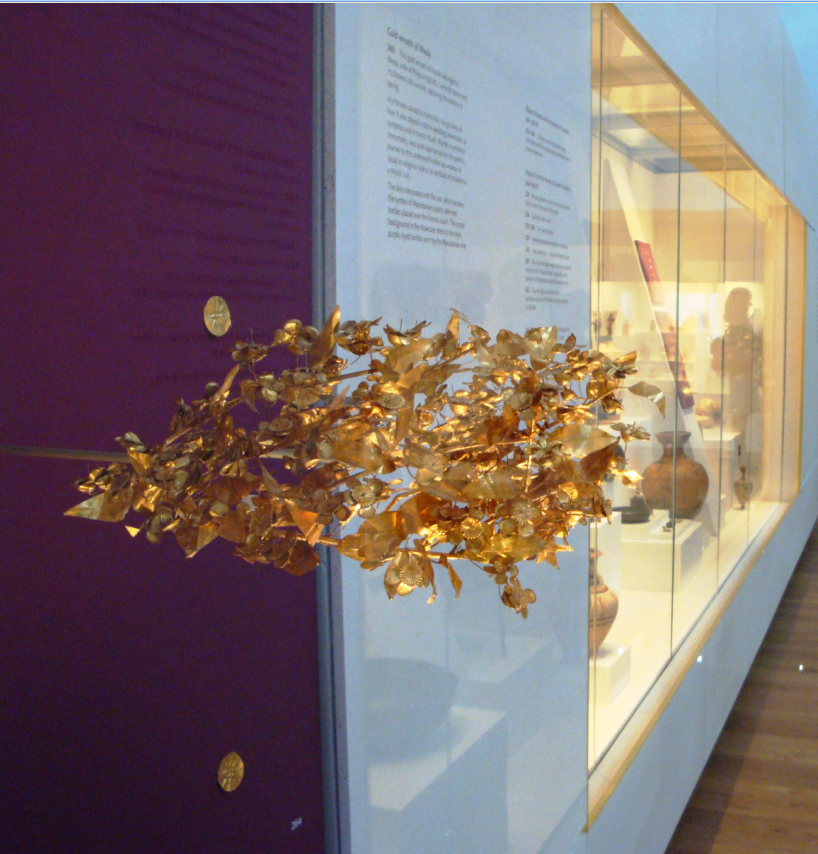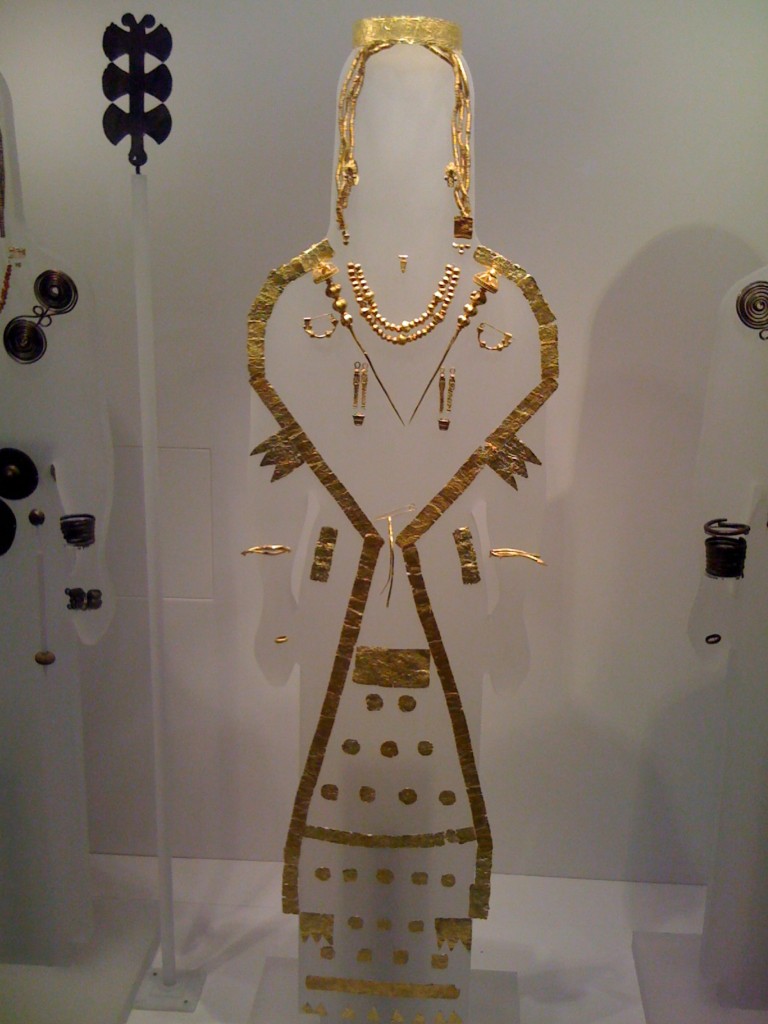In the first major archaeological exhibition in the new temporary exhibition galleries, the Ashmolean Museum showcases over 500 treasures made of gold, silver and bronze, recently found in the royal burial tombs and the palace of Aegae, the ancient capital of Macedon. These extraordinary new discoveries will go on display for the first time outside Greece. They re-write the history of early Greece and tell the story of the royal court and the kings and queens who governed Macedon, from the descendants of Heracles to the ruling dynasty of Alexander the Great.
Royal women’s fashion in ancient Macedon
The most recent excavations have concentrated on the tombs of the royal women, and the exhibition’s next section shows their important role at the court. Jewellery, fashion, and objects used for grooming, as well as sacred objects, such as clay heads of divine and demonic figures, underline the leading role of these powerful women as queens, princesses and high-priestesses, offering a vivid portrayal of the female world in the palace from around 1000 to 300 BC. A centrepiece of the show will be the assemblage of five women: four dating to the Early Iron Age (1000-700 BC) and one, the ‘Lady of Aegae’, to around 500 BC. The ‘Lady of Aegae’, a queen and high-priestess, was found in an undisturbed tomb, bedecked with funerary goods and dressed, head-to-toe, in spectacular gold jewellery which had been sewn into her clothes.
A political answer to Skopje
Apart from its indisputable cultural value, the “Heracles to Alexander the Great: Treasures from the Royal Capital of Macedon, a Hellenic Kingdom in the age of Democracy” exhibition has a deep political meaning addressing to Skopje. Skopje and Greece have been involved in a long-time court battle since the first has decided to call itself “Republic of Macedonia”, claiming the name of the Hellenic Kingdom of Alexander the Great and the northern prefecture of Greece in modern history. The Ashmolean highlighting that “Macedon” is “a Hellenic Kingdom” is no coincidence. The best of examples was offered again by historian Robin Lane Fox at the opening day of the exhibition. “This exhibition proves that whoever claims Skopje is Macedonia, knows nothing about History. It is the same as claiming Oxford is in Belarus”
And I guess it’s not.
Catalogue: £25




Came to yuor web blog through Bing. You already know I will be subscribing to your feed.
Thank you for subscribing, don’t hesitate to share every article that you like!